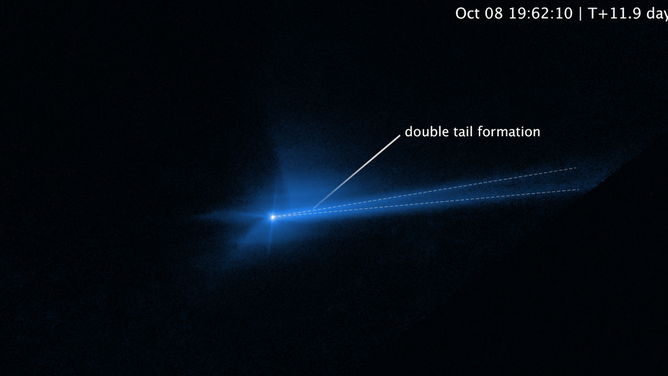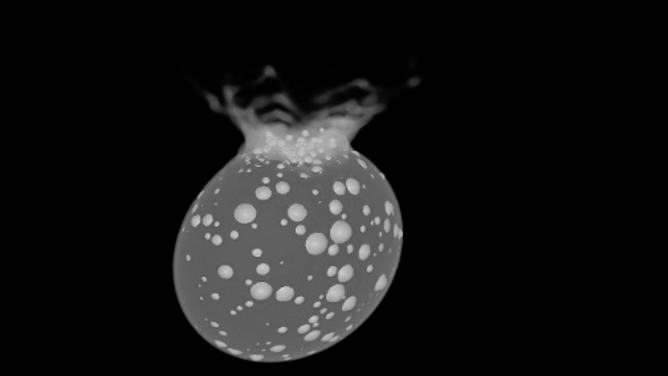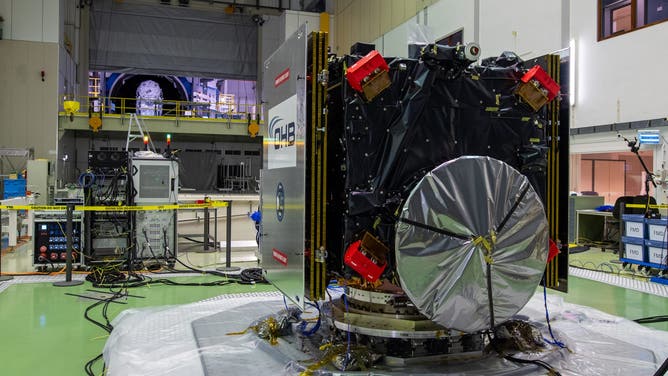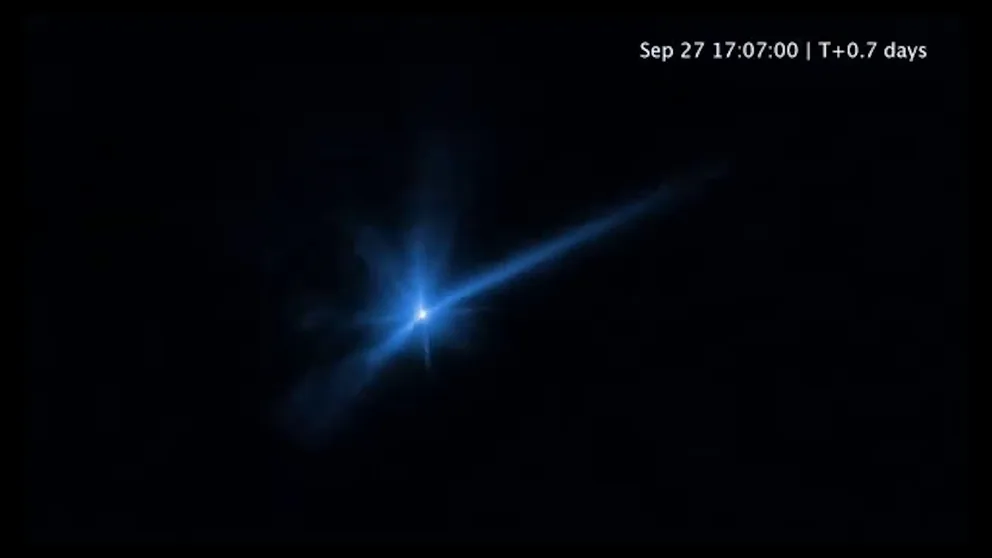NASA asteroid-smashing mission continues to prove battering-ram option works to defend Earth
In September 2022, NASA's vending-machine-sized spacecraft slammed into a small asteroid known as Dimorphos at 13,000 mph. After running hundreds of simulations, an international research team said most likely instead of leaving an impact crater, the asteroid was completely reshaped.
Watch: New video shows DART asteroid impact debris from Hubble space telescope
A video NASA released on Wednesday shows the debris caused by the Double Asteroid Redirection Test (DART) mission spacecraft slamming into the asteroid Dimorphos. (Courtesy: NASA / ESA / STScI / Jian-Yang Li (PSI) / Joseph DePasquale (STScI))
Nearly two years after NASA's DART spacecraft intentionally crashed into an asteroid to test a planetary defense method, scientists continue to see results from the mission showing that this plan could work when Earth needs protection from an incoming asteroid.
The Double Asteroid Redirect Test (DART) was a NASA mission designed to test the kinetic impact theory, a planetary defense method using one object to change the orbit of another with brute force.
'LOSS OF SIGNAL:' NASA SUCCESSFULLY CRASHES DART SPACECRAFT INTO ASTEROID FOR PLANETARY DEFENSE TEST
On Sept. 26, 2022, the vending-machine-sized spacecraft slammed into a small asteroid known as Dimorphos at 13,000 mph. Dimorphos is a moonlet orbiting another larger asteroid known as Didymos.
Only two weeks after the impact, teams from the Johns Hopkins University Applied Physics Laboratory (JHUAPL) and NASA confirmed the first planet defense test was a "bull's-eye" changing the orbit of Dimorphos around the larger asteroid Didymos by about 32 minutes.

Stage 3 of the aftermath
(NASA / ESA / STScI / Jian-Yang Li (PSI) / Joseph DePasquale (STScI) / NASA)
Not only did the impact change the asteroid's orbital speed, but telescopes captured the change to the asteroid's surface. The Hubble Space Telescope showed a large debris trail or "ejecta cone" coming from the asteroid hours and days after the collision. The brightening of the Didymos system from the impact was observed by ground and space telescopes for weeks after the impact, according to NASA.
The most recent study published in Nature Astronomy this year found that DART's impact likely physically changed the asteroid. The study authors used simulations to show that DART's hit didn't leave a mark but reshaped the entire asteroid.
An international research team using Switzerland's University of Bern-developed Smoothed Particle Hydrodynamics (SPH) impact code to replicate the asteroid's behavior after DART's smashing encounter.
SMASHING SUCCESS: NASA'S FIRST PLANETARY DEFENSE TEST CHANGES ASTEROID'S ORBIT BY 32 MINUTES
Based on the changes seen from DART's impact and using SPH simulations, scientists believe Dimorphos is a "rubble pile" asteroid held together by feeble gravity.
After running hundreds of simulations, the team found that, most likely, instead of leaving an impact crater, the relatively weak asteroid was completely reshaped.
"The likelihood is that the crater grew to encompass the entire body itself," said study author Sabina Raducan of the Space Research and Planetary Science, Physics Institute of the University of Bern.

Stereoscopic view of DART impact simulation (Image: S.D. Raducan)
Researchers still don't know exactly how the asteroid reacted to the momentum transfer, but an upcoming European Space Agency mission will study Dimorphos, including measuring its mass. ESA's Hera spacecraft will launch to the Didymos system in late 2024.
Raducan is also co-chair of the Hera Impact Physics Working Group.
"Hera will probably not be able to find any crater left by DART. What it will discover instead will be a very different body," Raducan said. "Our simulations suggest that Dimorphos has had its initial flying saucer shape blunted on its impact side: if you think of Dimorphos as starting out as resembling a chocolate M&M, now it would look like it has had a bite taken out of it!"

ESA's Hera spacecraft is seen here on the Test Centre’s 640kN QUAD shaker, whose metal plate is moved vertically by a quartet of water-cooled electrodynamic shakers. (Image: ESA-SJM Photography)
The team estimates that about 1% of Dimorphos' entire mass was thrown into space by the DART impact, and about 8% of the asteroid's mass was moved about on its rocky body.
The Hera mission will hopefully confirm the changes to the asteroid when it arrives in 2026.
